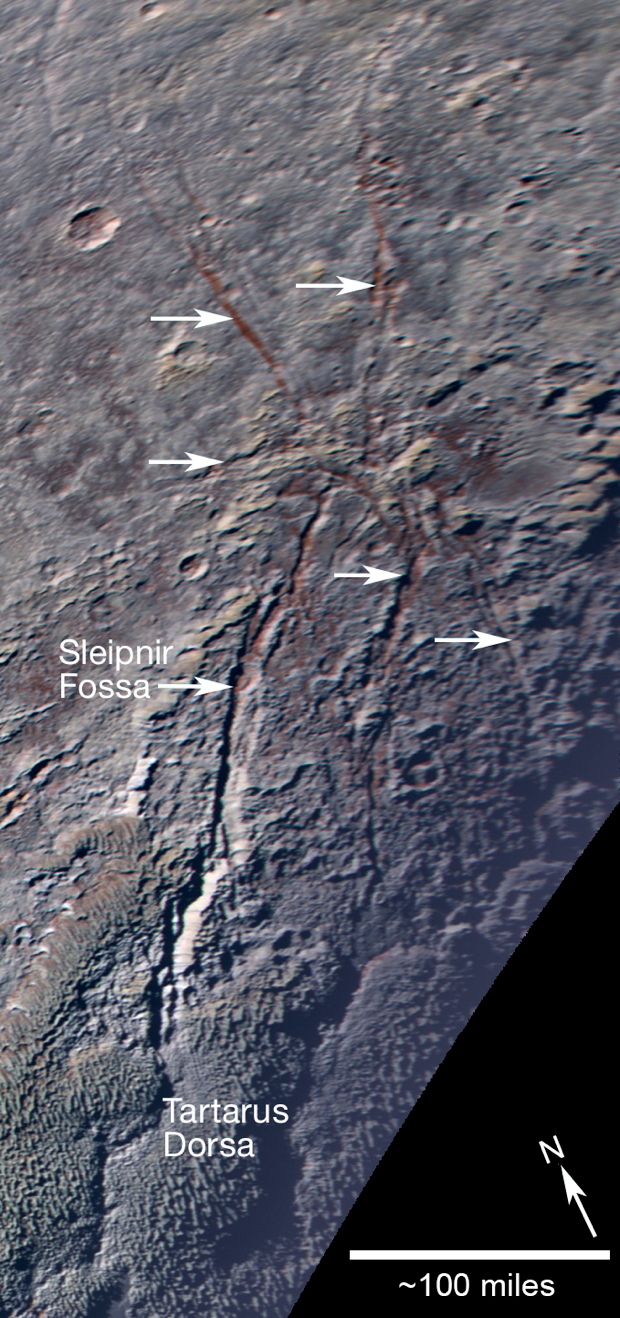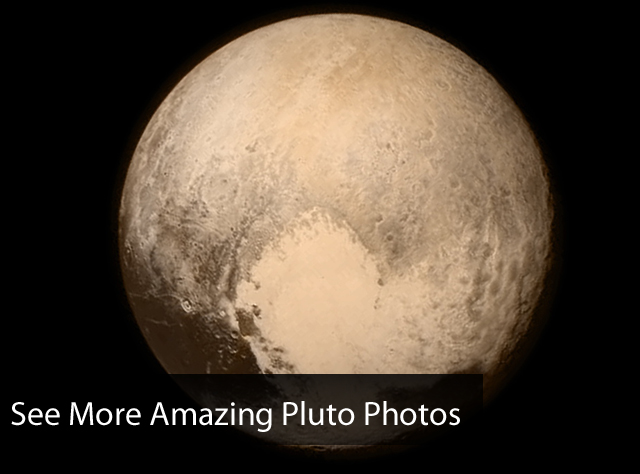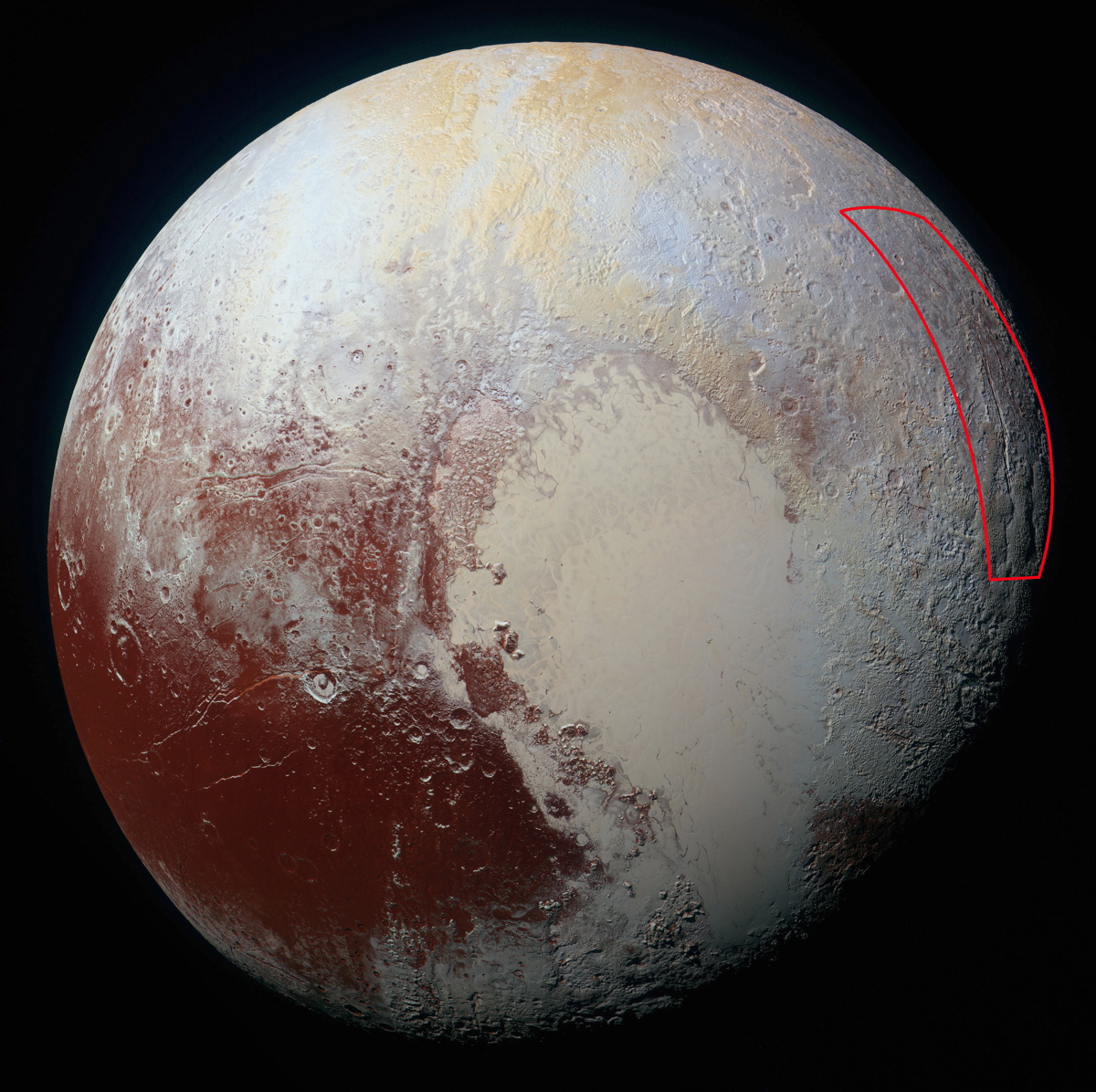Icy 'Spider' Spotted on Pluto in NASA Image (Video)
It's been said that spiders turn your blood to ice. Well, it turns out that an icy "spider" has been found on Pluto.
The "spider" is actually an unusual geological feature that caught scientists completely by surprise. Pictures taken by from the New Horizons spacecraft, which whizzed by the dwarf planet last summer, show a series of long fractures in Pluto's surface, all extending from a single, central point. We created a video tour of the icy "spider on Pluto image to take a closer look at the weird feature.
"The pattern these fractures form is like nothing else we've seen in the outer solar system, and shows once again that anywhere we look on Pluto, we see something different," Oliver White, a member of the New Horizons geology team from NASA Ames Research Center in California, said in a statement from the space agency. [See More Pluto Pictures from NASA's New Horizons Probe]

The spider picture shows at least six extensional fractions that converge into a central point. (Of course, six legs would technically make this feature an insect, not a spider.) The longest fracture — informally called Sleipnir Fossa — is more than 360 miles (580 kilometers) long. The fractures also cut across different types of terrain. At north and west, they slice across high plains. To the south, they cut across sharper terrain informally known as Tartarus Dorsa.
Scientists have seen fractures on Pluto before, which they say are created when water-ice crust on Pluto expands and causes the surface to crack. But those fractures tend to run parallel to one another, the NASA statement said. The body of the "spider" may have been created by a focused point of stress, perhaps from material coming up from under the surface in this area, the researchers suggested.

While, so far, this feature seems unique to Pluto and the outer solar system, researchers have seen similar shapes on planets closer to the sun.
"The spider somewhat resembles radially fractured centers on Venus called novae, seen by NASA's Magellan spacecraft [at Venus], as well as the Pantheon Fossae formation, seen by NASA's MESSENGER spacecraft on Mercury," NASA officials wrote in the statement.
Get the Space.com Newsletter
Breaking space news, the latest updates on rocket launches, skywatching events and more!

The new discovery may support the hypothesis that geologic activity has recently taken place under Pluto's surface.
The image was obtained about 45 minutes before New Horizons reached its closest point to Pluto on July 14, 2015. It was taken by New Horizons' Ralph/Multispectral Visible Imaging Camera with a resolution of roughly 2,230 feet (680 meters) per pixel.
Follow Elizabeth Howell @howellspace. Follow us @Spacedotcom, Facebook and Google+. Original article on Space.com.
Join our Space Forums to keep talking space on the latest missions, night sky and more! And if you have a news tip, correction or comment, let us know at: community@space.com.

Elizabeth Howell (she/her), Ph.D., was a staff writer in the spaceflight channel between 2022 and 2024 specializing in Canadian space news. She was contributing writer for Space.com for 10 years from 2012 to 2024. Elizabeth's reporting includes multiple exclusives with the White House, leading world coverage about a lost-and-found space tomato on the International Space Station, witnessing five human spaceflight launches on two continents, flying parabolic, working inside a spacesuit, and participating in a simulated Mars mission. Her latest book, "Why Am I Taller?" (ECW Press, 2022) is co-written with astronaut Dave Williams.









